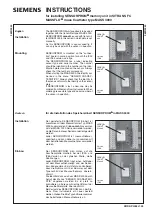
46
High Availability IP SAN with Redundant Controller
Component
Description
Storage system
Redundant controllers with a total of 8 host ports
HBA
iSCSI initiators, preferably PCIeTOE (TCP/IP offload engine)-capable
cards
GbE cables
GbE network cables
GbE switch
Ports divided into 2 virtual LANs to separate access from host to targets
Software
MPIO to manage the fault-tolerant paths with failover/failback and load
balance capabilities. Use MPIO multipathing software for the operating
system to identify the alternative paths to the same logical drive.
RAID configuration
•
This configuration does not support remote replication functionality.
To set up remote replication, refer to High Availability IP SAN with
Port Trunk (Remote Replication Enabled) or High Availability IP
SAN with Port Trunk (Remote Replication Enabled).
•
Four logical drives (each logical drive has four member drives).
You can include the drives from the expansion systems for better
performance.
•
LD0 mapped to CH0 AID and CH0 BID; LD assigned to controller A
•
LD1 mapped to CH1 AID and CH1 BID; LD assigned to controller A
•
LD2 mapped to CH2 AID and CH2 BID; LD assigned to controller B
•
LD3 mapped to CH3 AID and CH3 BID; LD assigned to controller B
CH0 AID
CH1 AID
CH2 BID
CH3 BID
Logical drive assignment
IMPORTANT!
In the event of single controller failure, a logical drive is accessed via the host IDs
managed by the alternate controller. The host and port IDs do not failover to the remaining
controller. In this case, MPIO driver is necessary for path redundancy and controller failover.
















































